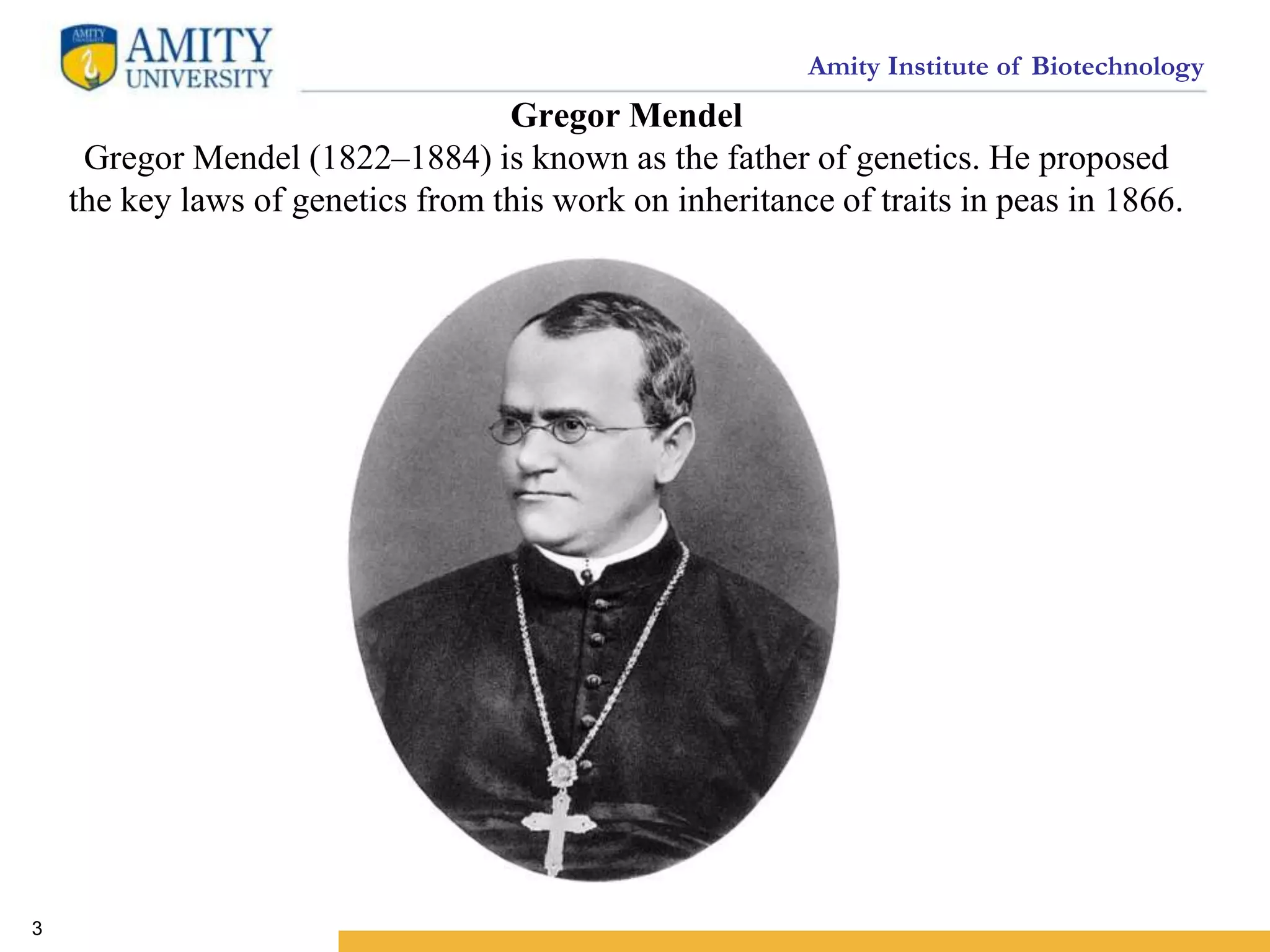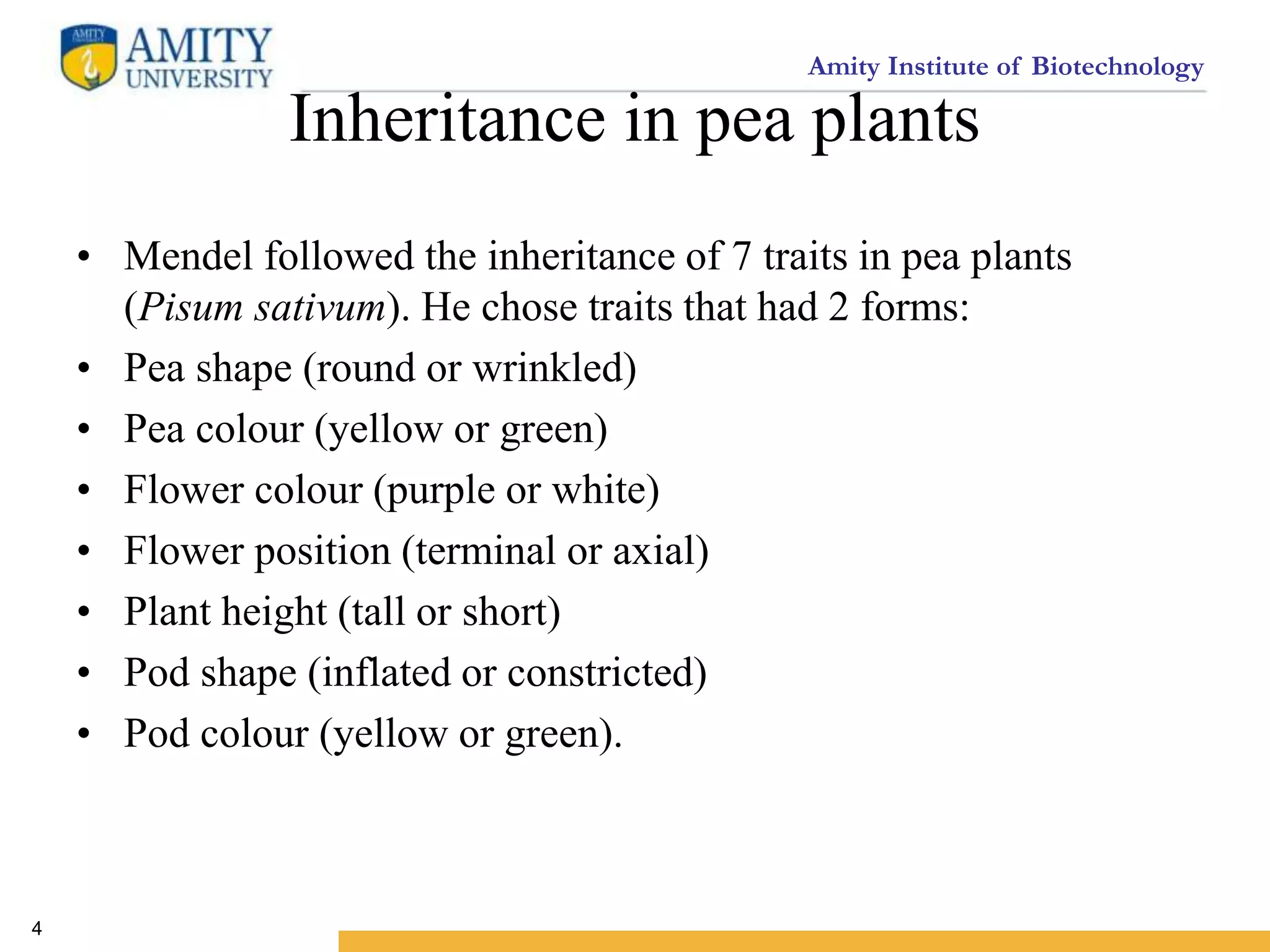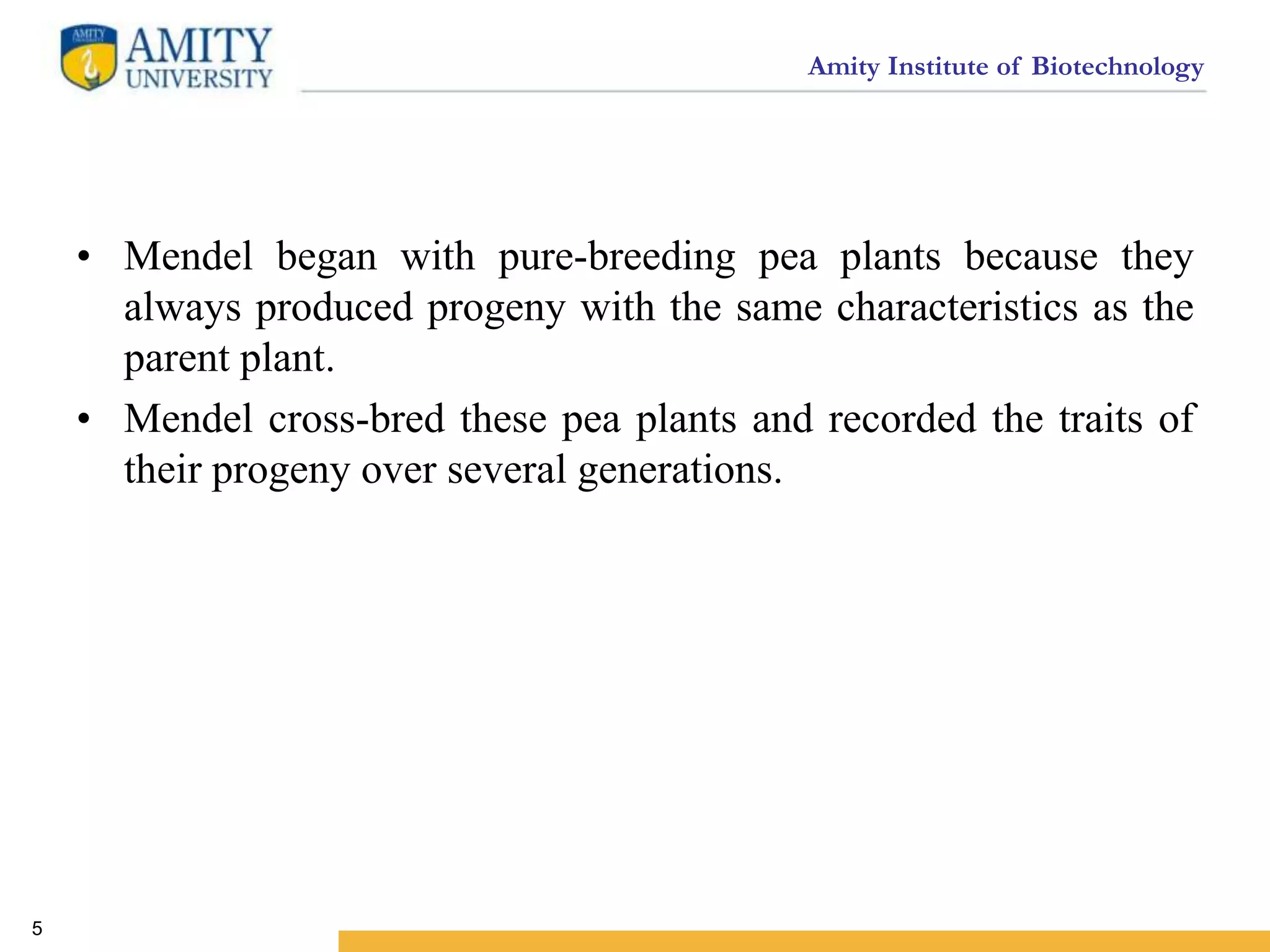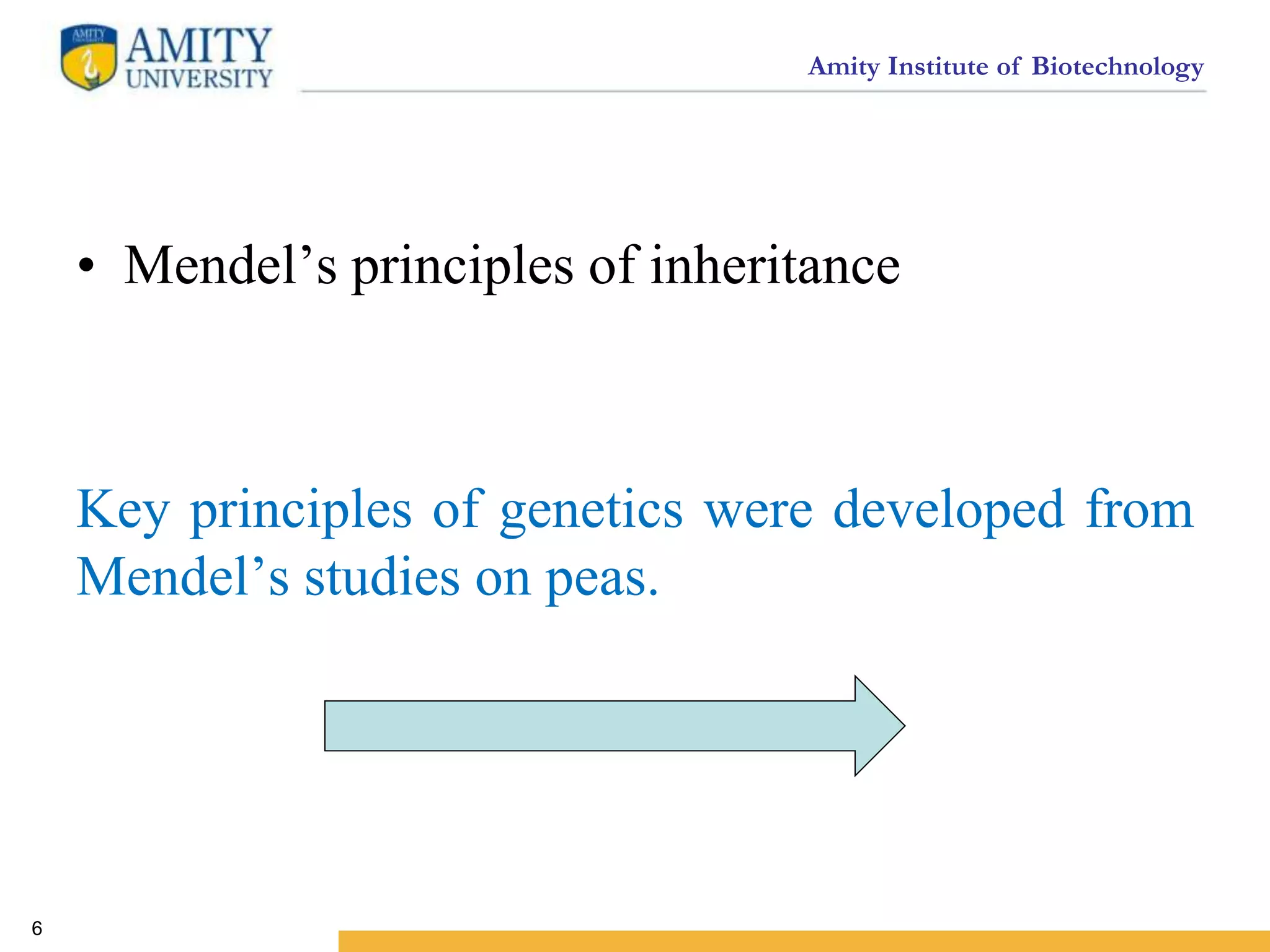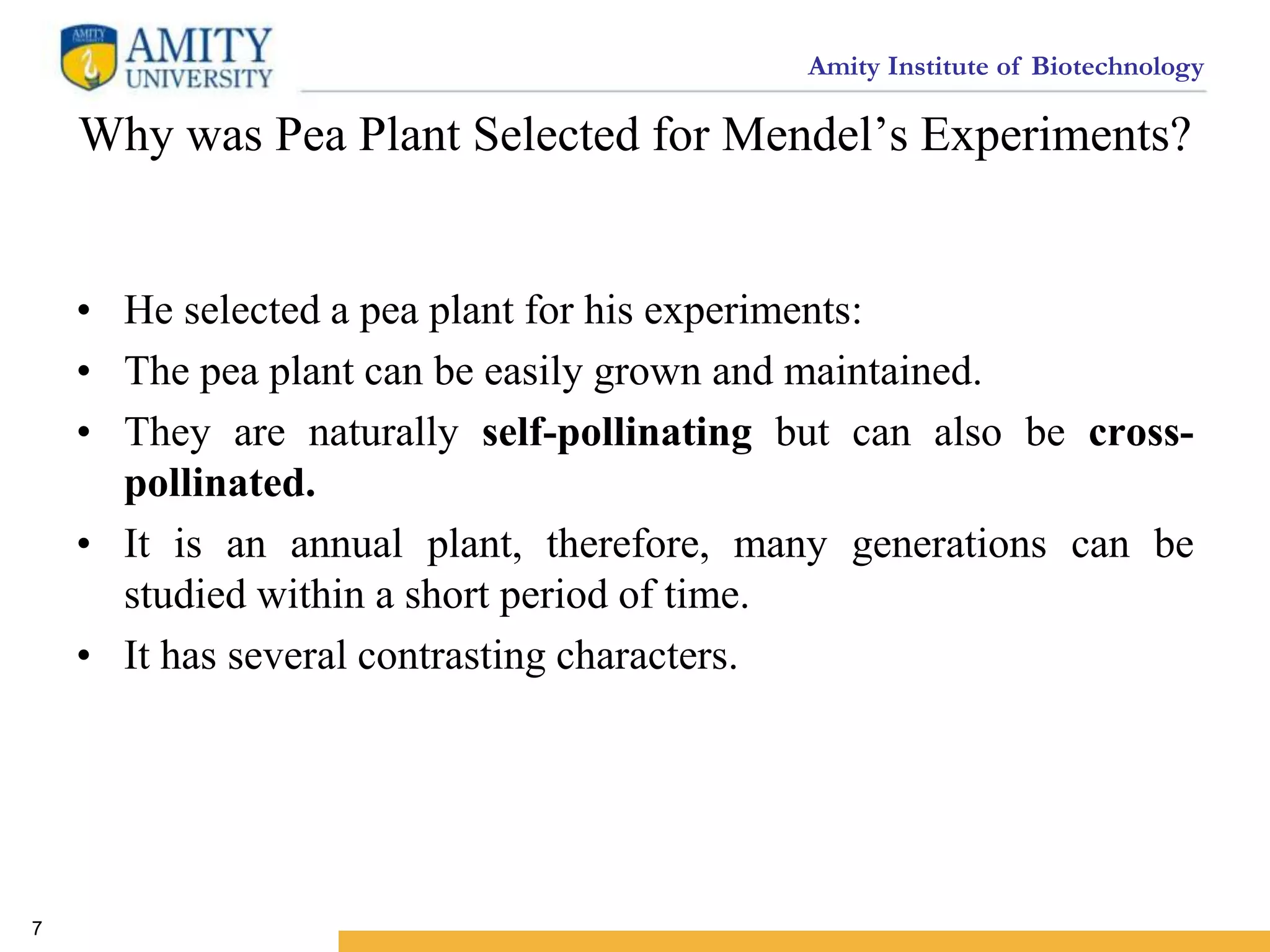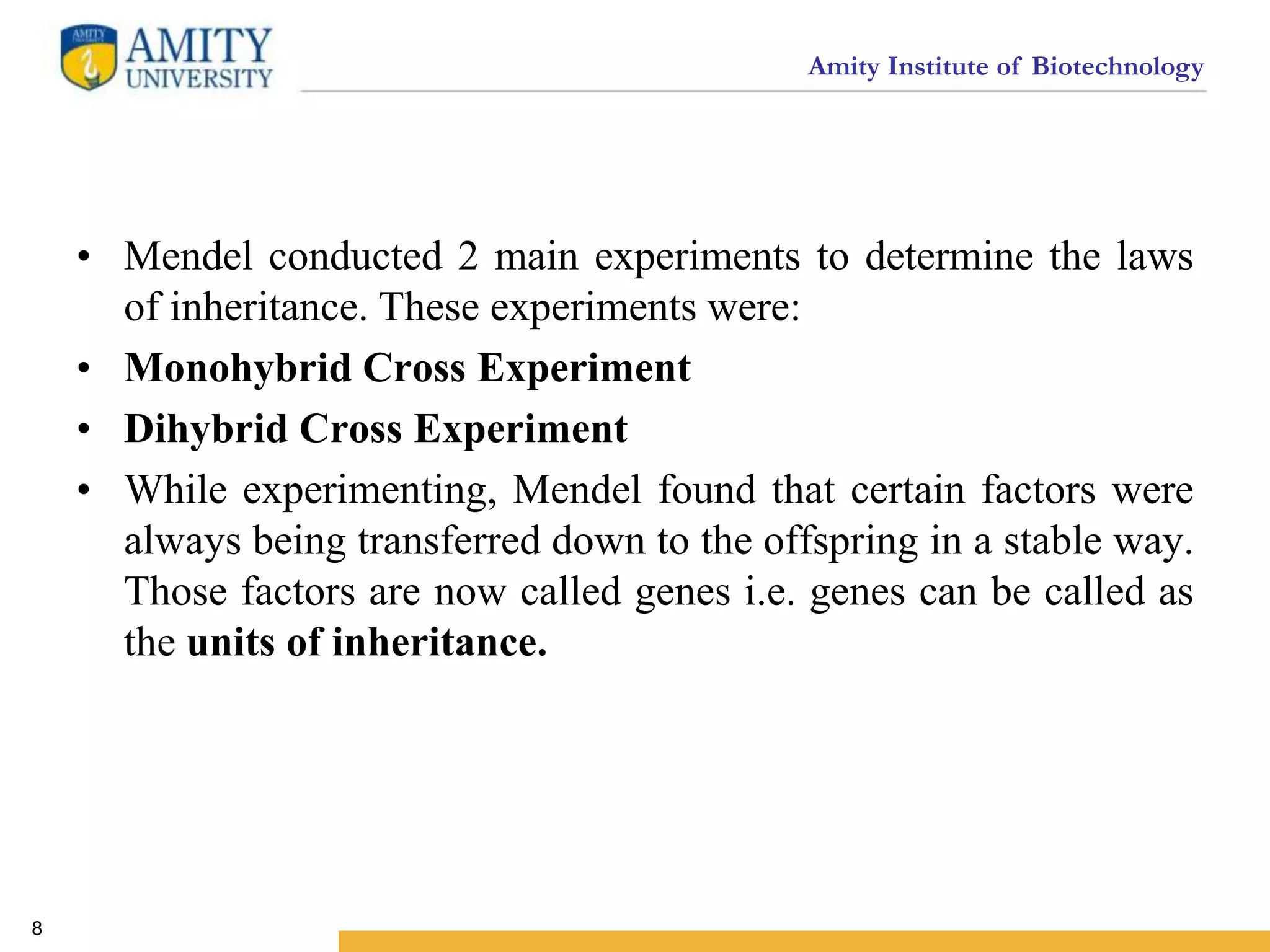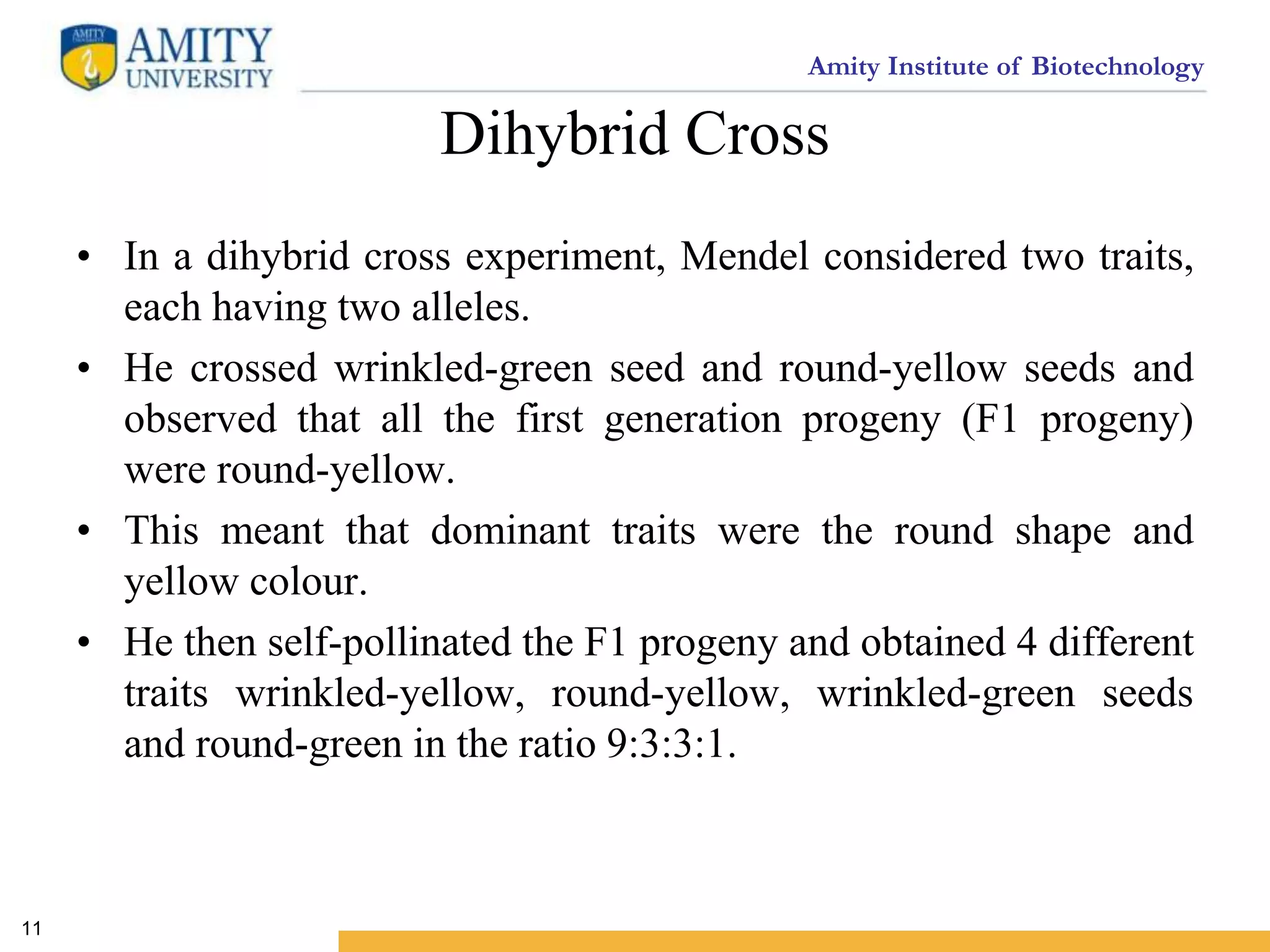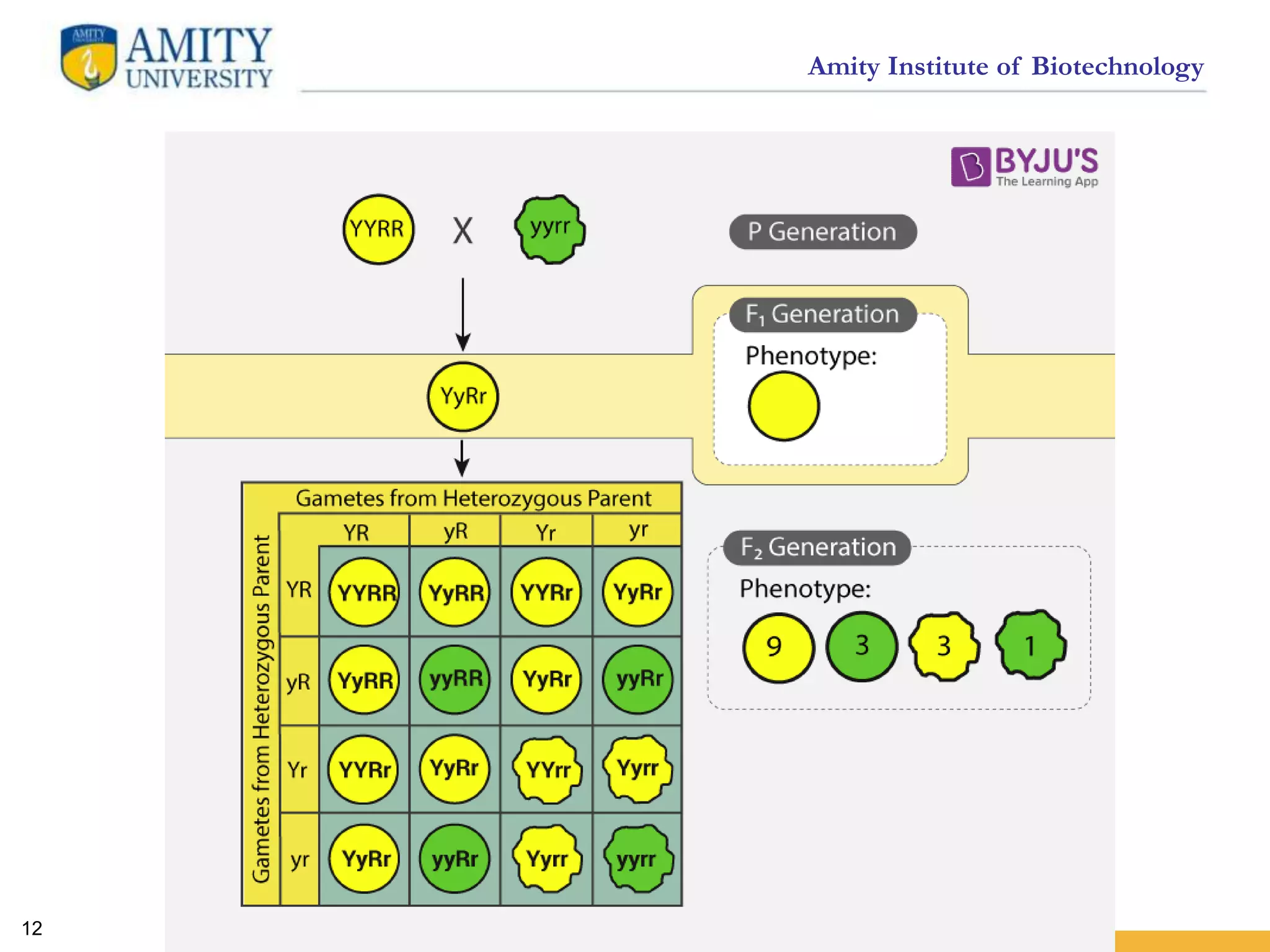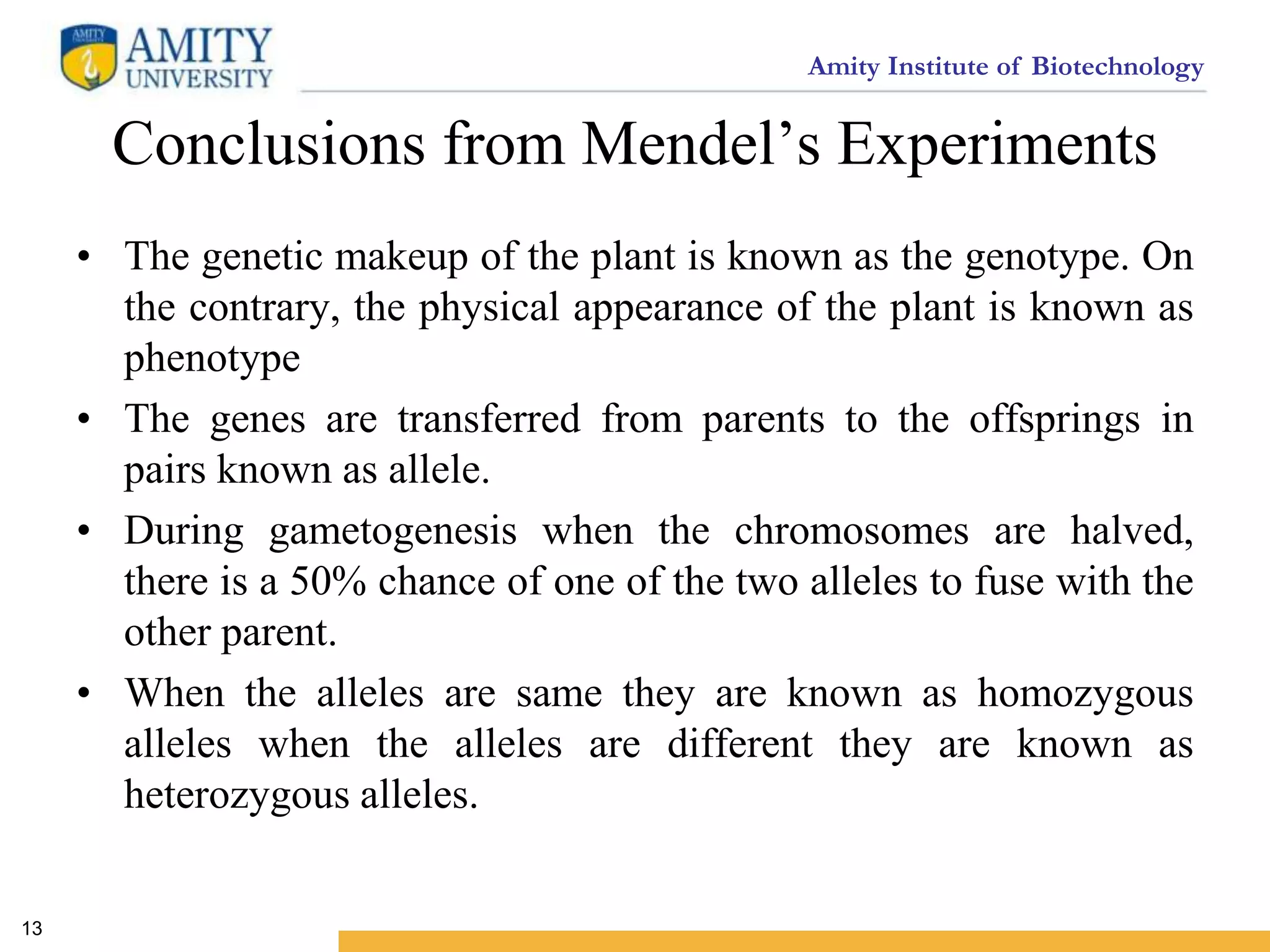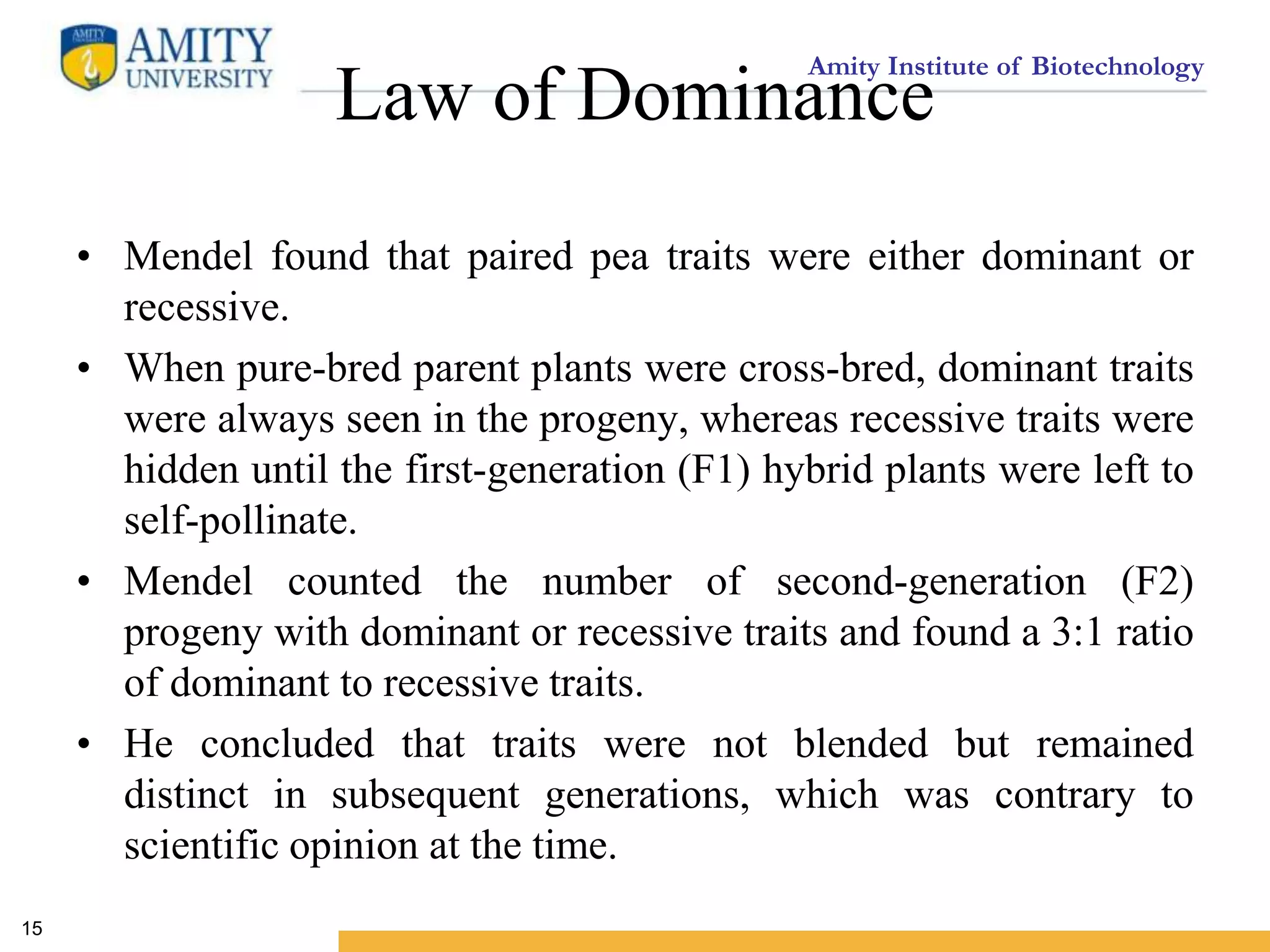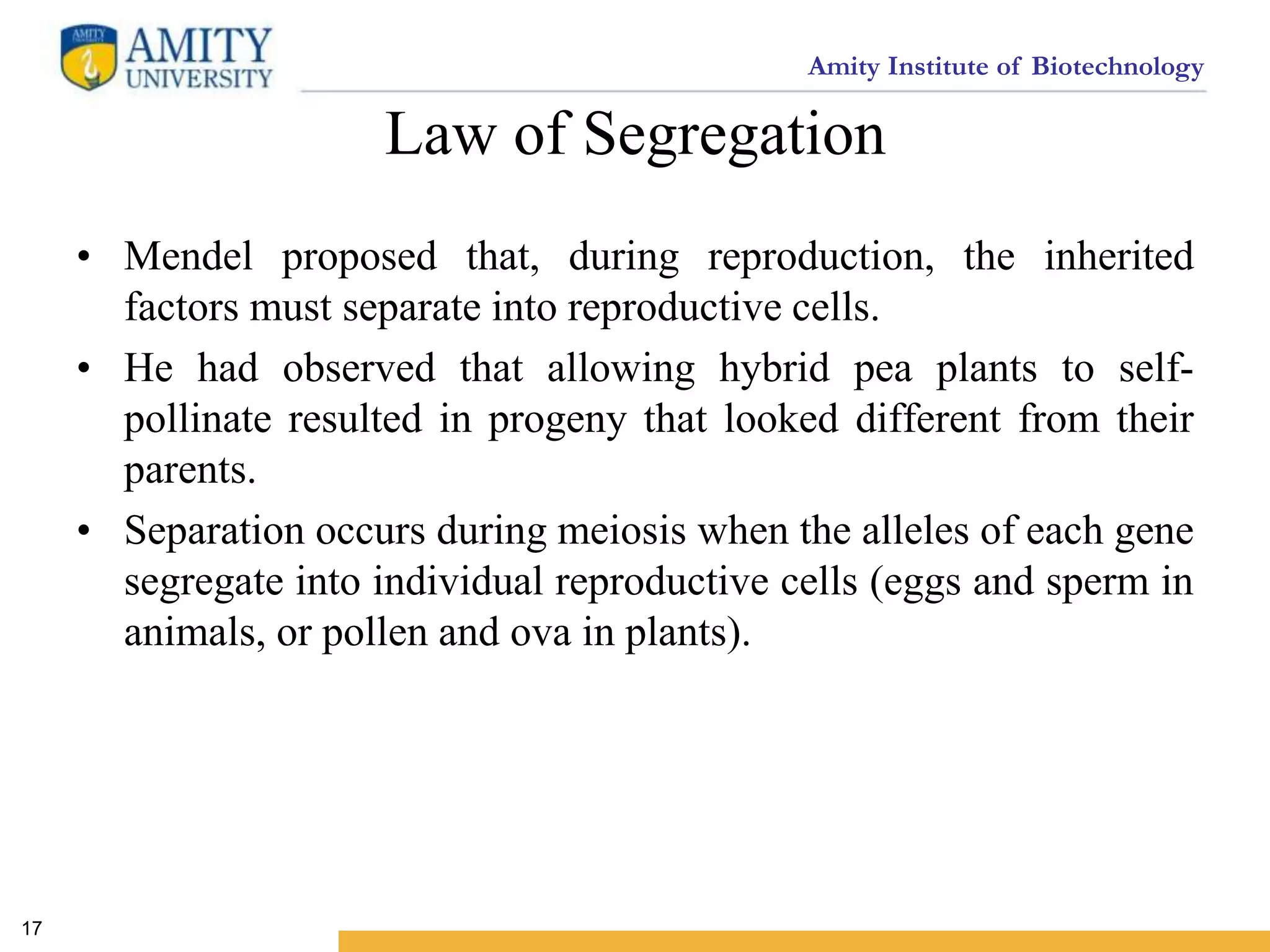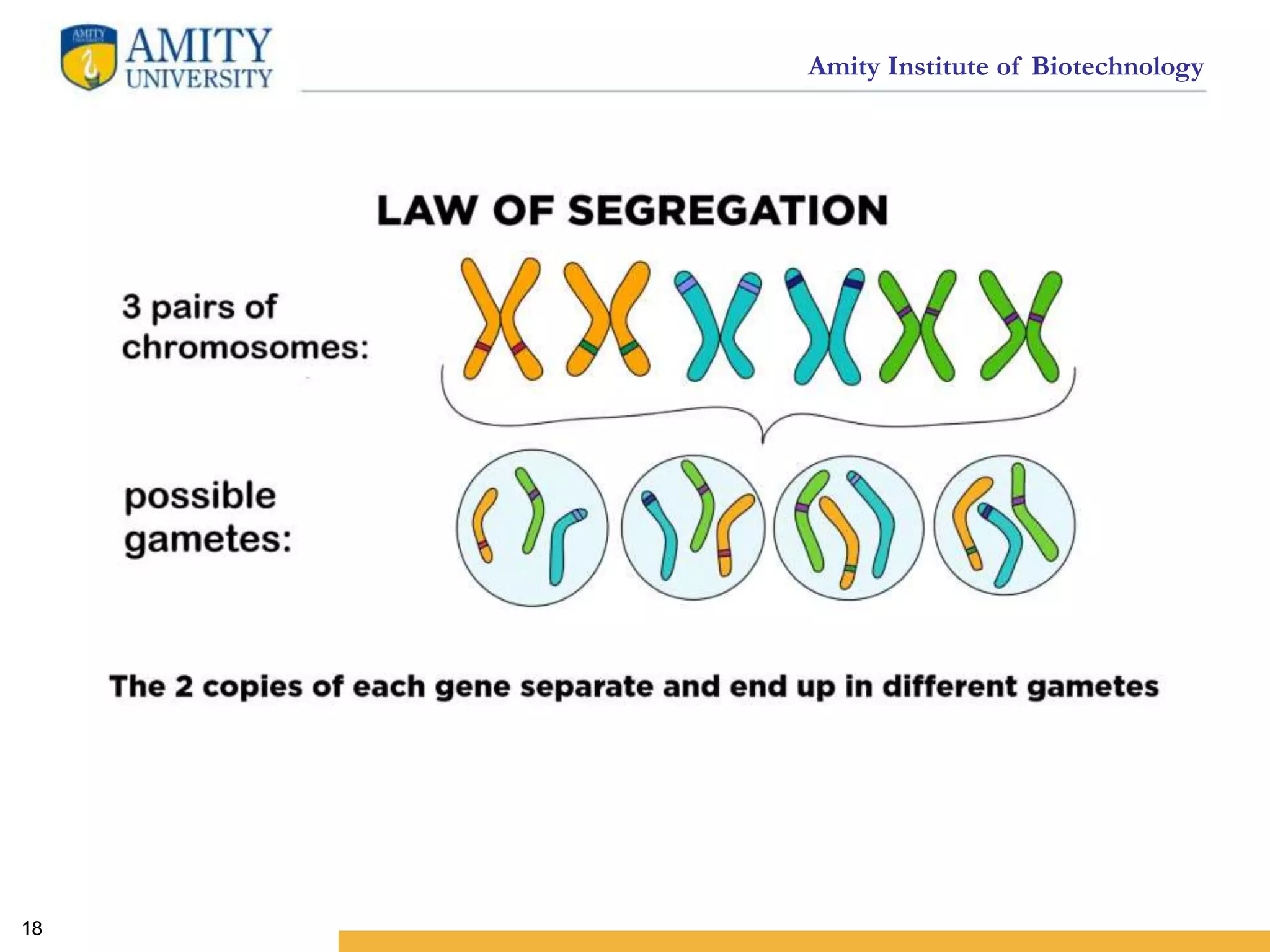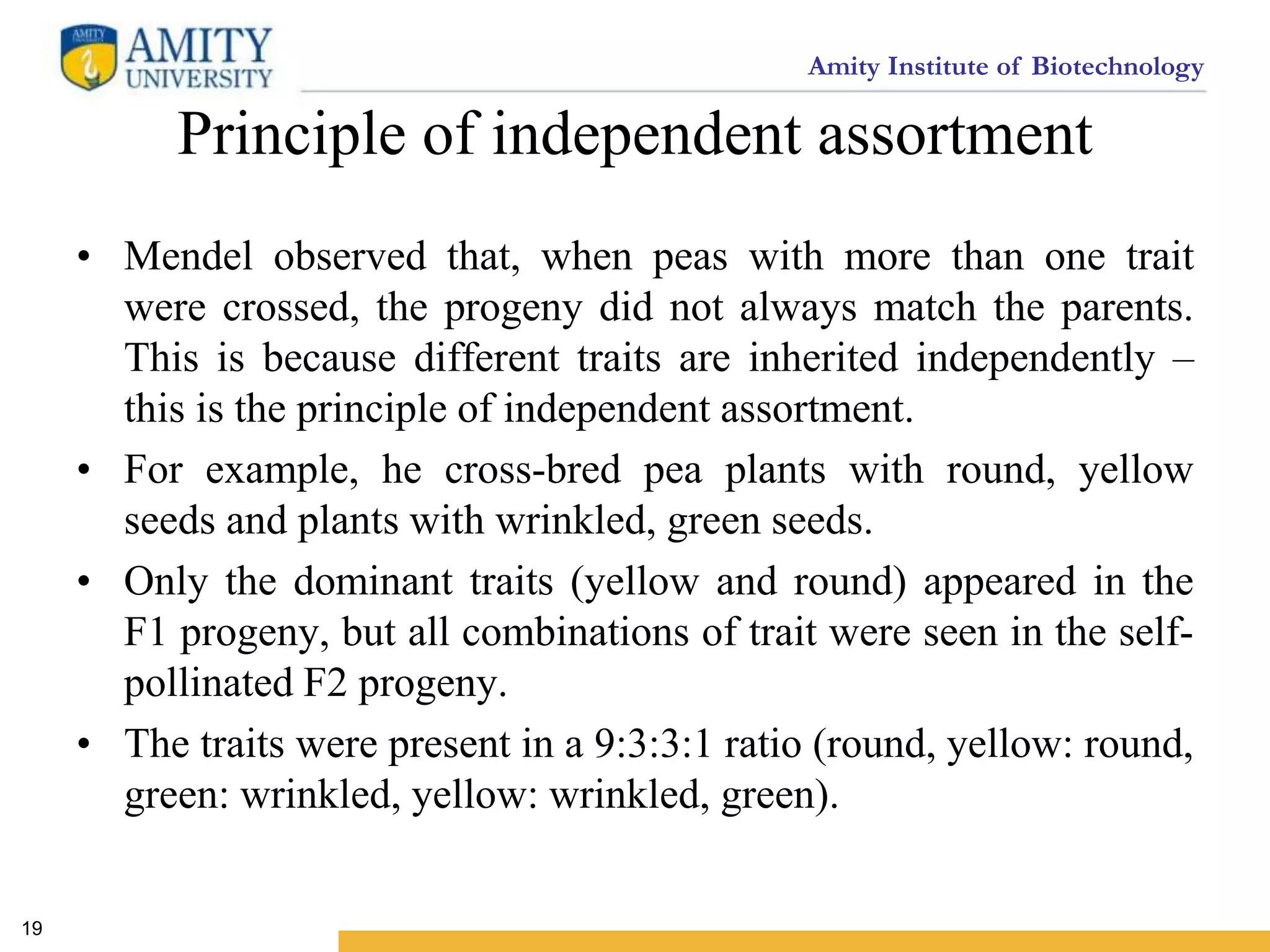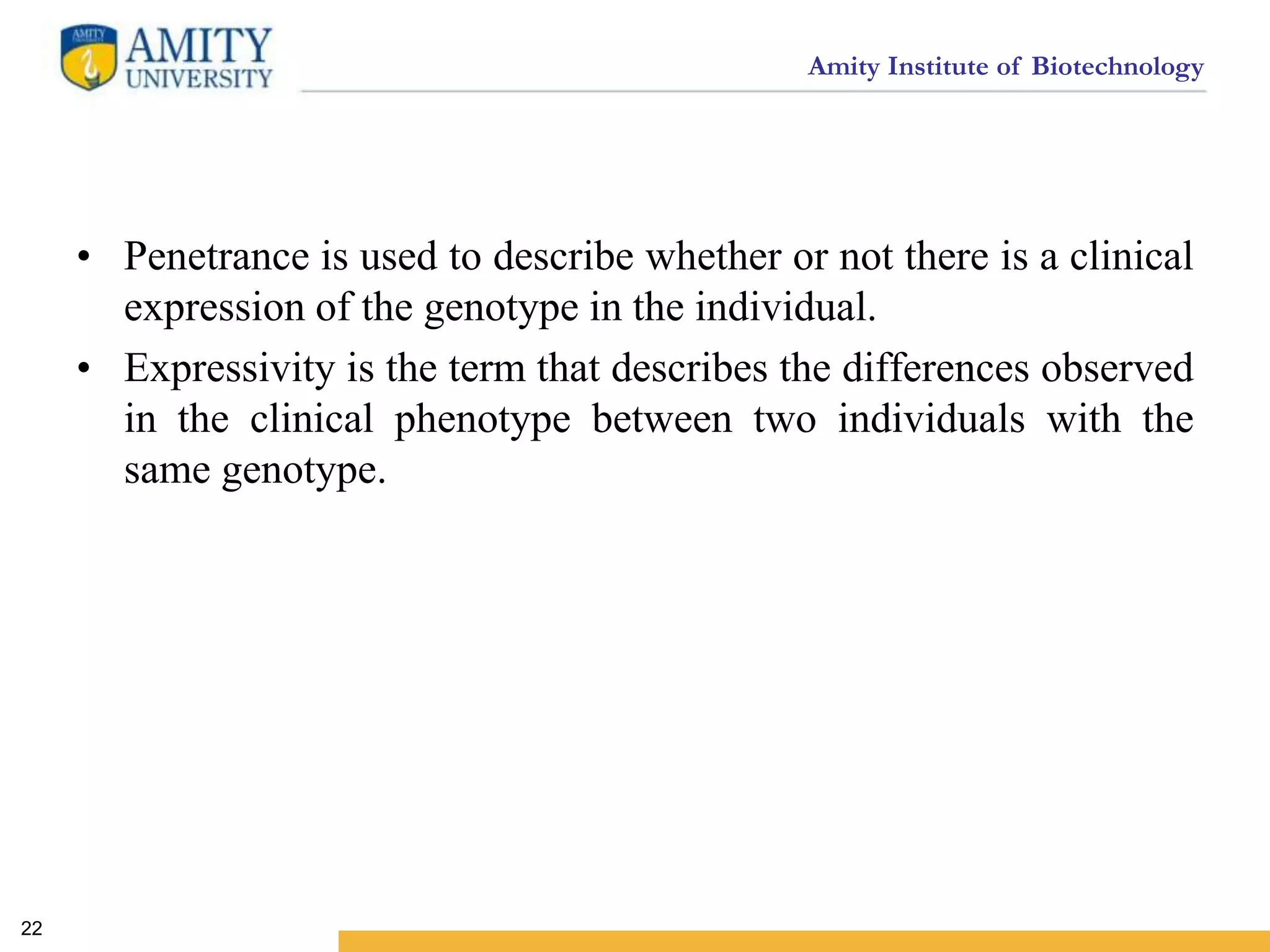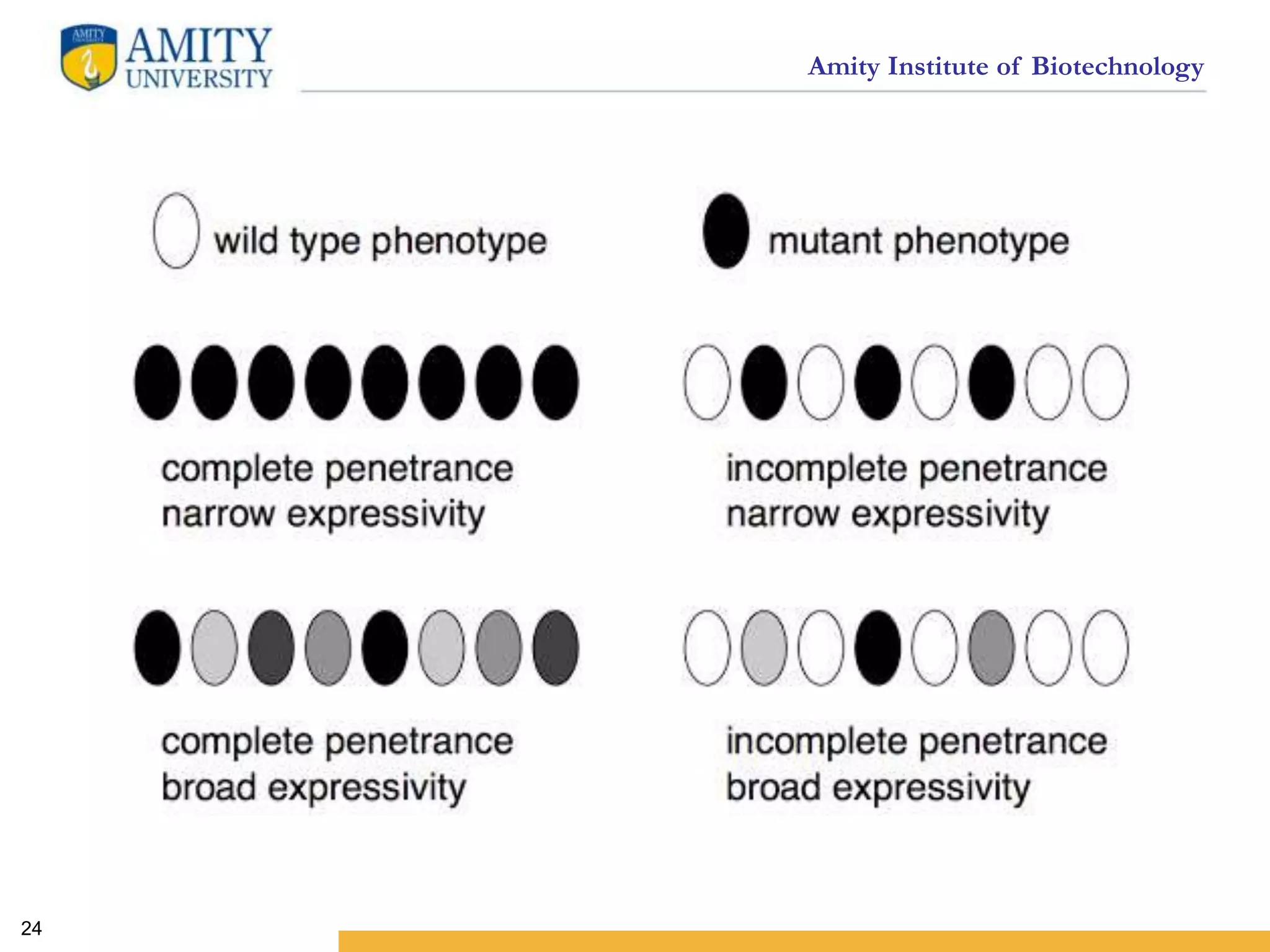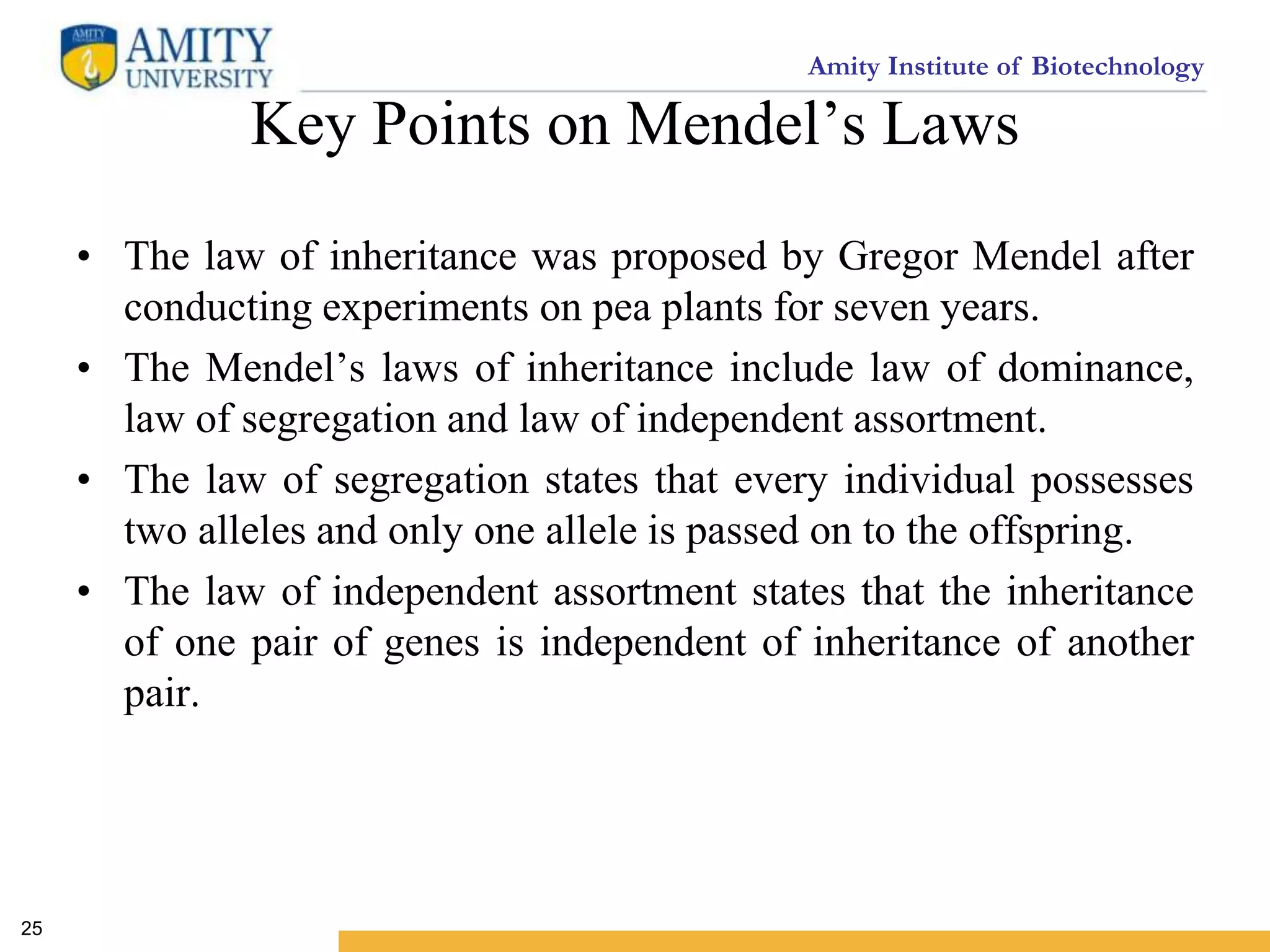Gregor Mendel conducted experiments with pea plants in the 1860s to develop an understanding of heredity. He studied seven traits in pea plants and found that traits are passed to offspring through discrete factors, now called genes. His experiments led him to formulate the laws of inheritance, including the law of dominance, the law of segregation, and the law of independent assortment. Mendel's principles explained inheritance in a way that was ahead of scientific understanding at the time and formed the foundation of modern genetics.


